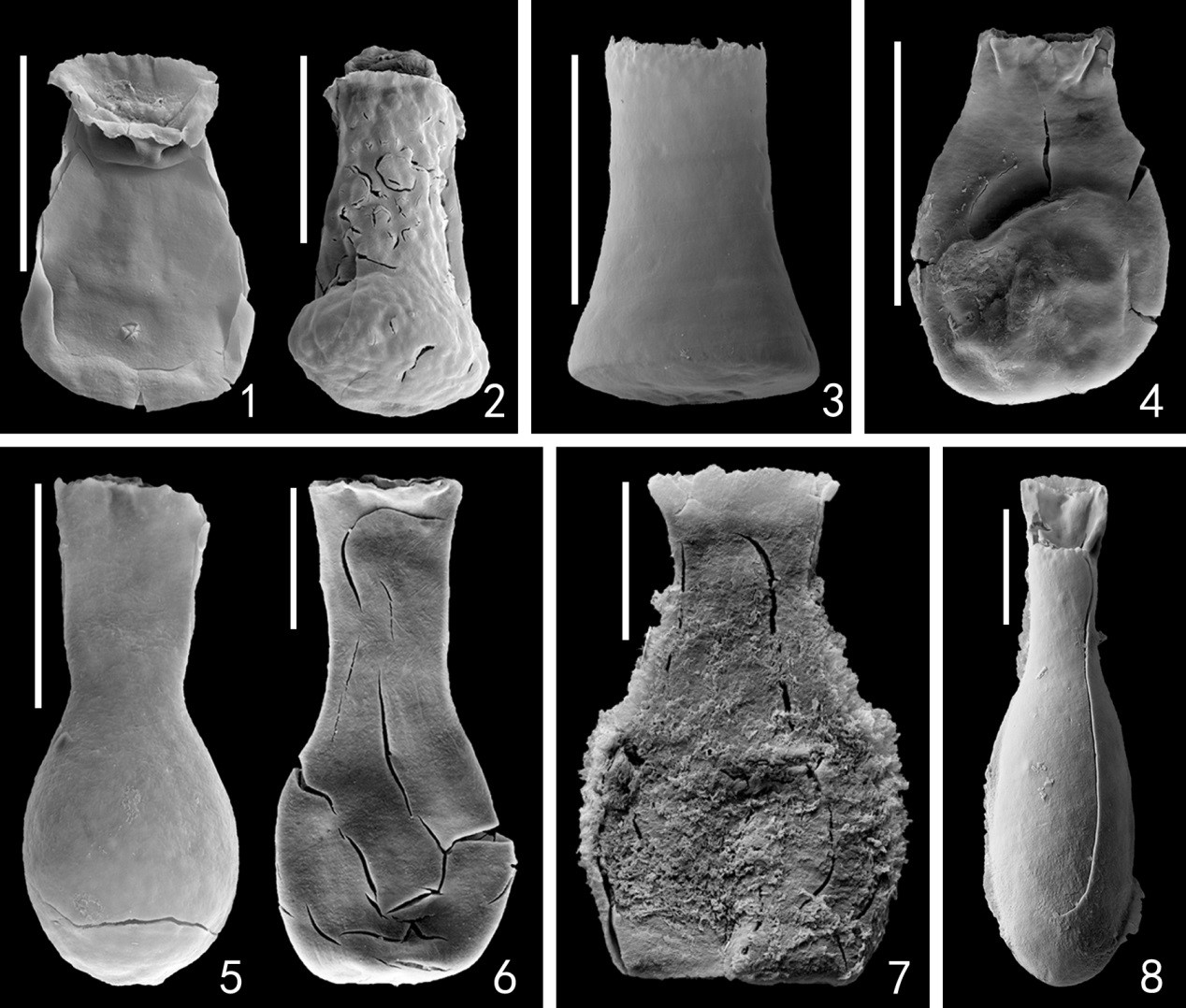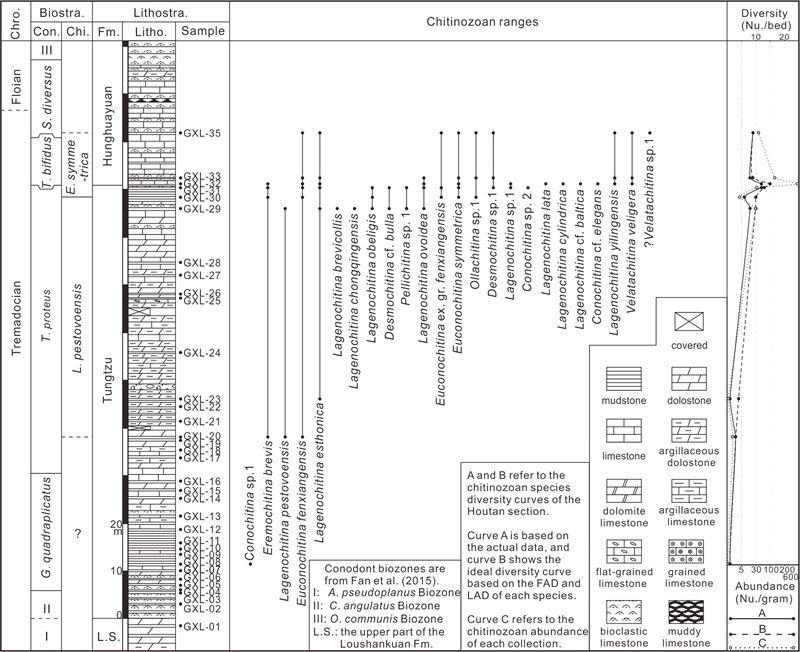As an extinct group of organic-walled microfossils, chitinozoans are characterized by a world-wide distribution and a fairly restricted biostratigraphical range, making them an efficient tool for Ordovician, Silurian and Devonian biostratigraphic investigations and precise international correlation. Lagenochitina destombesi and Euconochitina symmetrica biozones were the lowest and widely adopted chitinozoan biozones, which were also adopted in South China. However, according to our study, no typical Lagenochitina destombesi was found in South China. Besides, the base of the Euconochitina symmetrica biozone, which was previously considered as an indicator for the base of Floian, is occurring in the upper Tremadocian in South China.
In the present study by Dr. LIANG Yan from Nanjing Insitute of Geology and Palaeontology, Chinese Academy of Sciences and her collegues, a rich Tremadoc chitinozoan assemblage, including 24 species of 8 genera, at the newly investigated Houtan section from the Yangtze Platform, South China was reported (Fig.1). A systematic palaeontological and statistical investigation on Lagenochitina pestovoensis and Lagenochitina destombesi shows that the index species of the L. destombesi Biozone previously described in South China is questionable (Fig.2). The L. pestovoensis Biozone is proposed to substitute the previously used L. destombesi Biozone at Houtan, South China as the lowest chitinozoan biozone in the Tremadocian.
According to the previous reports and based on the materials recovered at Houtan, the Euconochitina symmetrica Biozone appears in South China clearly earlier than the Floian (Fig.3). Even more, the index species of the biozone is confined in the uppermost Tremadocian in Yiyang and Yichang areas. Nowak et al. (2016) and Amberg et al. (2017) reported E. symmetrica in the Tremadocian of Morocco (included in northern Gondwana) and northern England (Avalonia), respectively. Thus, a revision is needed to figure out the precise stratigraphical range of the E. symmetrica Biozone not only in South China, but also in other palaeocontinents, in order to allow a precise international correlation of the Tremadocian-Floian boundary by means of chitinozoan biostratigraphy.
This research was funded by the National Natural Science Foundation of China, State Key Laboratory of Palaeobiology and Stratigraphy, Nanjing Institute of Geology and Palaeontology, Chinese Academy of Sciences. This paper is a contribution to the IGCP 653 (The Onset of the Great Ordovician Biodiversification Event). Part of the work for this manuscript was finished at the Institute of Advanced Study (IAS), Durham University and at the department of Geology, Tallinn University of Technology.
Article information: Liang, Y., Servais, T., Tang, P., Liu, J.B., Wang, W.H., 2017. Tremadocian (Early Ordovician) chitinozoan biostratigraphy of South China: An update. Review of Palaeobotany and Palynology 247: 149-163. Doi: 10.1016/j.revpalbo.2017.08.008.

Selected chitinozoans

Chitinozoan stratigraphic ranges and chrono-, bio- and lithostratigraphy of the Early Ordovician Tungtzu and Hunghuayuan formations at Houtan village of Xishui, northern Guizhou Province, with chitinozoan abundance and diversity curves on the right column.

